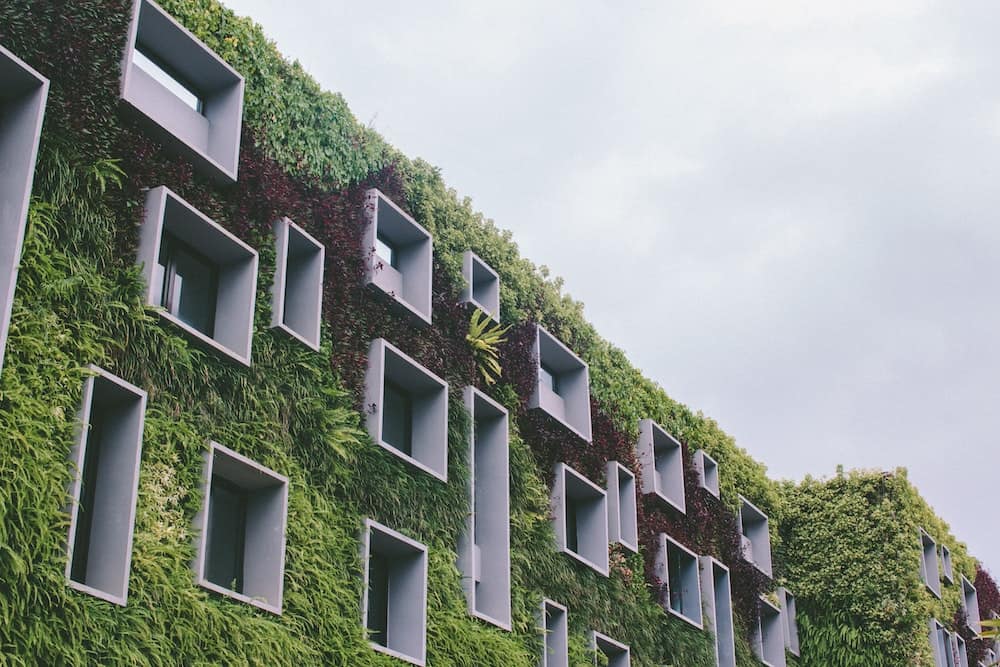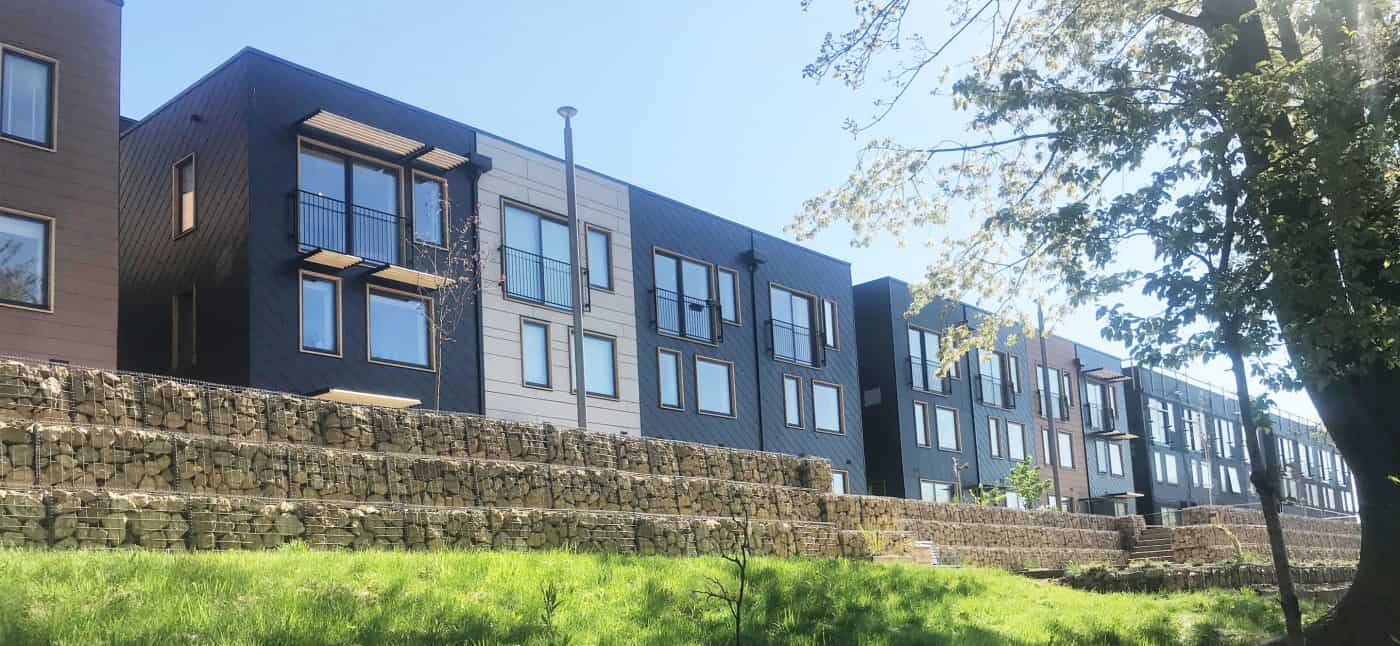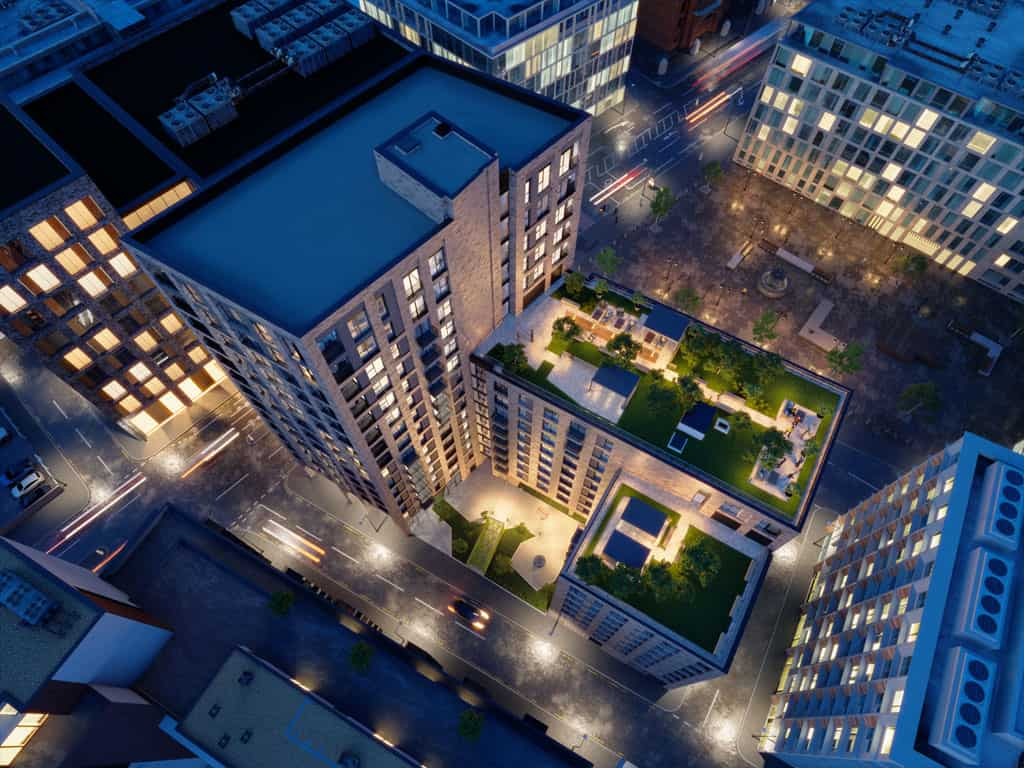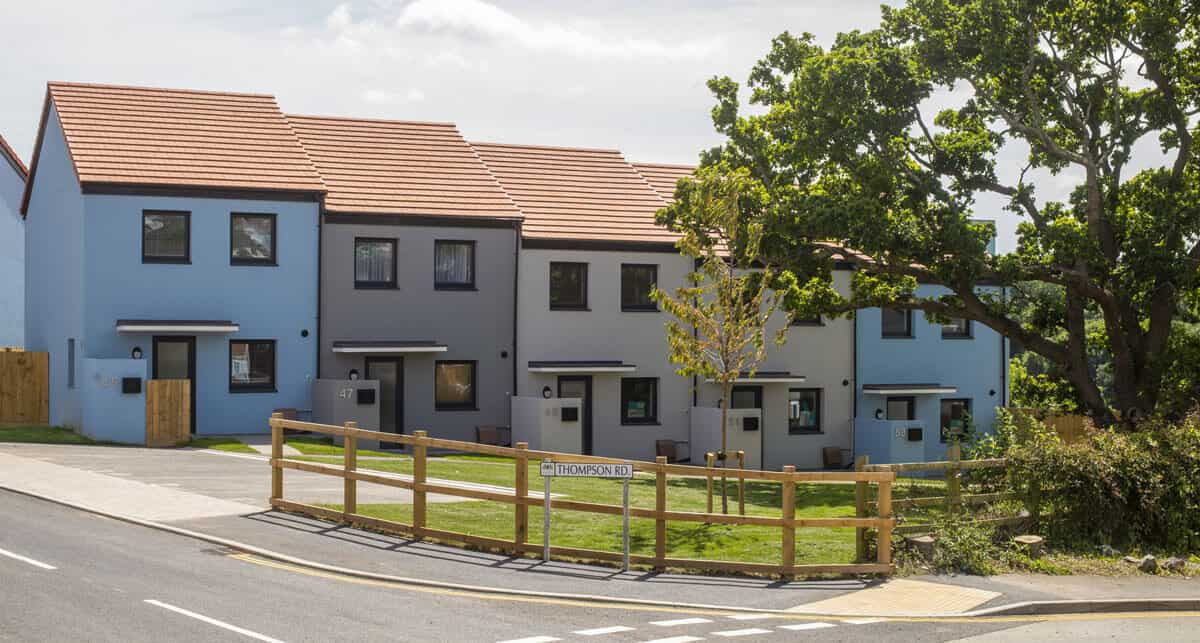October 29th, 2021. Tom Lee
Green Property: Are Eco Builds Worth the Investment?
Eco builds may be on the rise, but does the demand justify the cost? Here, we discuss the pros and cons of investing in green property.

From innovative living walls and grass roofs to passive building standards and the availability of new and more eco-friendly building materials, there have been a number of significant advances in eco construction. Green building technology is a hot trend, and it is not just residential projects that are on the rise – many cities also have ambitious eco builds in the pipeline, too.
The fact is, developments that consider their environmental impact carefully, and try to reduce it, are more popular than ever before. However, does the demand for green property justify the cost? Let’s take a closer look at whether eco developments are worth the investment.
How Popular is Green Real Estate?
According to the International Finance Corporation, green buildings are a global investment opportunity that could be worth $24.7 trillion (roughly £18 trillion) by 2030.
In the UK, more than 30 companies have already signed up to the Net Zero Carbon Buildings Commitment, and throughout 2019, the number of central London-based companies who signed up to science-based targets doubled.
Furthermore, research by Nielsen shows 73% of millennials are willing to pay more for an eco-friendly property. Nielsen says:
“Despite the fact that Millennials are coming of age in one of the most difficult economic climates in the past 100 years, they continue to be most willing to pay extra for sustainable offerings–almost three-out-of-four respondents.”
The Advantages of Eco Builds
One key advantage of eco-friendly developments is that they pre-empt the government’s ambitious new energy efficiency targets, for what is hoped will be a ‘green building revolution’. The plans are to radically improve the energy efficiency of all new builds, and for developments to produce 75-80% lower carbon emissions compared to current levels.
Housing Minister, Rt Hon Christopher Pincher MP, said:
“Improving the energy performance of buildings is vital to achieving net-zero emissions by 2050 and protecting the environment for future generations to come.”
In light of these targets, green construction can be seen as a way of futureproofing developments and extending their appeal.
Additionally, eco builds have the added advantages of:
- Lower maintenance and operation costs
- Improved living environments (air quality, lighting, and ergonomics)
- Improved water efficiency
- Better health, due to the higher safety of building materials
- Reduced strain on local resources, such as water and energy
- Improved material efficiency
Combined, these factors present an attractive picture to potential buyers, which could mean an increased interest in your development.
The Disadvantages of Eco Builds
For investors and developers, cost is a notable drawback when it comes to eco-friendly property. Inevitably, the advantages of eco builds do come alongside significantly higher construction costs, so securing the appropriate finance may be an added barrier.
Looking beyond the upfront costs is critical to encourage more capital investment. In the case of eco builds, the value of choosing quality over cost may be the opportunity to attract higher interest, and higher-value tenants over time, particularly as demand continues to increase.
Key Locations for Eco Construction
Several cities already have ambitious eco-friendly developments in the pipeline, and these locations in particular could be prime sites for future green projects.
Leeds

The Citu Home in Leeds, due for completion in 2022, is the UK’s largest urban sustainable development project so far – costing £250 million. Pairing sleek Scandinavian design with sustainable technology, the property delivers nearly non-existent heating costs, and is powered by 100% renewable energy.
Another energy-efficient project in Leeds is The Ironworks, in Holbeck Urban Village. The 68 new apartments, townhouses and penthouses will come equipped with ‘photo voltaic tiles, electric heating and highly insulated walls and ceilings’.
Manchester

Ancoats Gardens, located in the heart of Manchester, is just one of the city’s prominent eco-friendly builds. With 155 high-specification one, two and three bedroom apartments, a two-story gym, private gardens, shared social space and underground parking, the property features cutting-edge low-carbon technologies to earn its sustainable title. It has also won prestigious, national awards for its forward-thinking design.
Plymouth

Primrose Park in Plymouth earned the title of the UK’s largest residential Passivhaus upon completion in 2019. A German concept, Passivhaus design centres around homes that need to use very little energy for heating or cooling. The highly insulated buildings have zero heat loss, and 80% lower carbon emissions.
The Primrose Hill development comprises of 72 properties, all built to these high specifications. The project was incentivised by Plymouth city council, who offered the site to housing developers for just £1.
Should You Invest in Green Real Estate?
Eco-friendly property is a rapidly growing market with plenty of potential for both investors and developers. Of course, if you are planning a unique project, you will need the right funding.
The opportunities are growing, and we are pleased to confirm a new green lending funder has entered the market with an attractive eco-incentivised product. The scheme offers discounted development finance for housebuilders achieving a SAP score of over 85, equivalent to an EPC of B and above, on new developments.
Key features include:
- Finance from £1m – £20m.
- A 1.25% discount on the interest rate will be given for homes achieving a minimum EPC rating of B (SAP 85).
- The rate can be reduced to 4.75% pa (a discount of 2%) if EPC A is achieved.
- The scheme can be used to fund houses or flats, however flats must have peppercorn ground rent (£1).
- Up to 70% LTV day 1, 70% LTGDV and 85% LTC.
With this product you also benefit from initial free of charge, plus expert advice from sustainability consultants. Harry Hodell, Director at Pure Structured Finance, said:
“It’s great to see lenders incentivising more energy efficient builds in an increasingly environmentally conscious world. Rewarding developers for achieving exceptional EPC ratings stands to benefit all parties involved, with the end user saving on utilities through less wastage too.”
Finance For Your Eco Development
Here at Pure Structured Finance, we are experts at securing development finance for ambitious, complex projects. Get in touch with our team today to find out how we can bring your plan to life.
Article By Tom Lee
October 29th, 2021
Tom is one of the founding members of the company and has been a part of the Pure Group since 2013 playing an integral part of the business’s growth and direction.
He had over 10 years of experience in the real estate financial sector prior to joining Pure with a major bank. Tom has a wealth of experience providing debt advisory on large, complex deal structures for developers and investors across all asset classes, throughout the UK and parts of Europe.
He has built a strong network across the property and finance sector, which enables him to provide a total package solution to his clients and contacts, with whom he has built long standing relationships.
Email: tom@purestructuredfinance.co.uk
Follow Tom on LinkedIn here.
See more articles by Tom